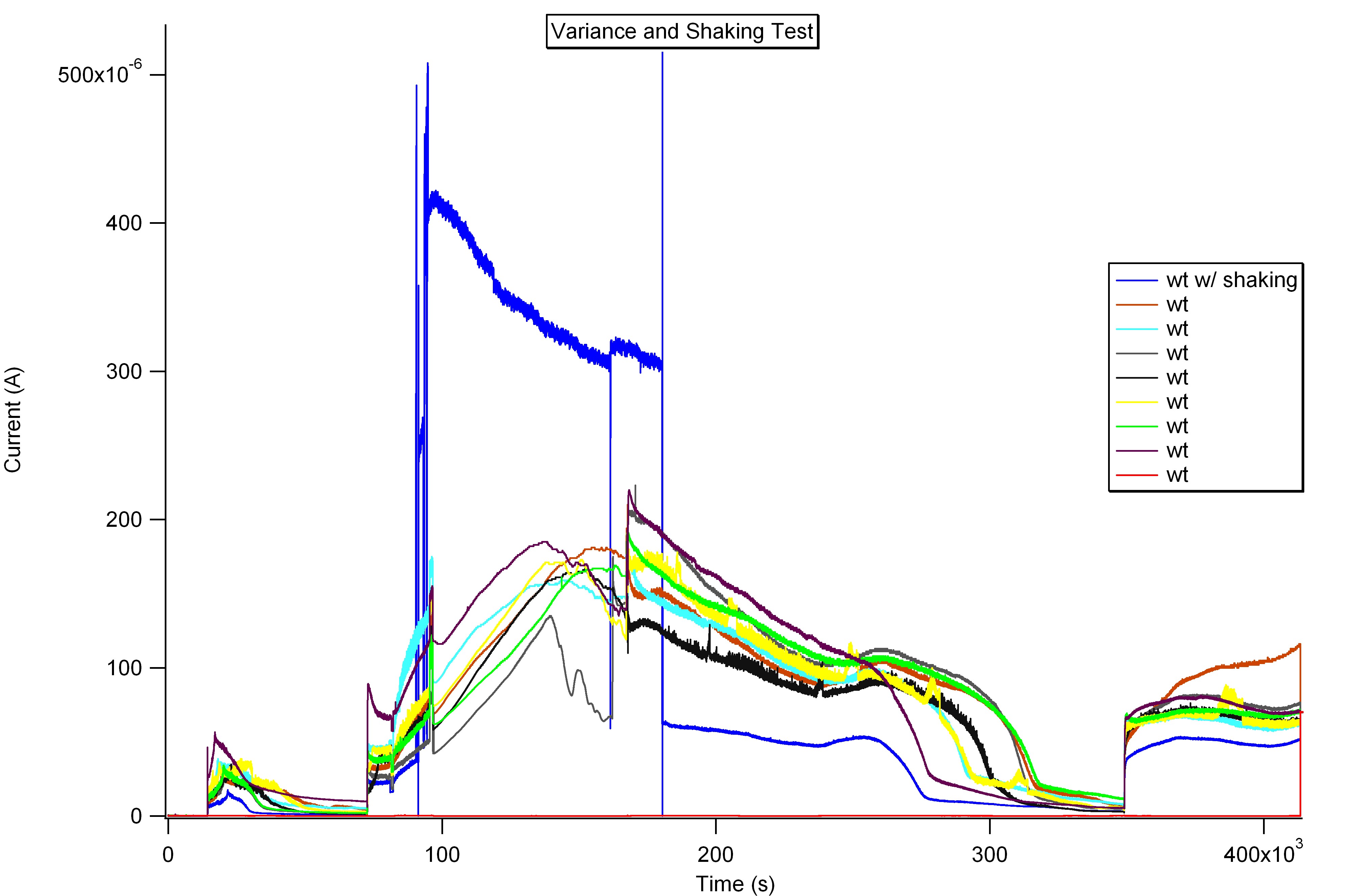Team:Harvard/Dailybook/Week6/Widgetry
From 2008.igem.org
(Difference between revisions)
Linchinlee (Talk | contribs) (→Tuesday: July 29, 2008) |
Linchinlee (Talk | contribs) (→First Nine-chamber Test) |
||
| (4 intermediate revisions not shown) | |||
| Line 10: | Line 10: | ||
* Placed built fuel cells under UV light to prevent contamination | * Placed built fuel cells under UV light to prevent contamination | ||
| - | |||
| - | |||
| - | |||
| - | |||
| - | |||
[[Image:shaking.jpg | 600px]] | [[Image:shaking.jpg | 600px]] | ||
| Line 36: | Line 31: | ||
:-Shows that shaking directly affects current production | :-Shows that shaking directly affects current production | ||
| + | |||
| + | :-Therefore, amount of gas bubbling directly affects current production | ||
| + | |||
| + | - Possible to use this as direct test for computer interface | ||
Latest revision as of 21:22, 29 October 2008
Goals for this week
- Finish building remainder of chambers to bring us up to a total of 9 working fuel cells
- Configure Kiethley/LabVIEW to support measurement from 9 fuel cells
- Run test with 9 identical wt chambers to test for reproducibility of results
- Use argon instead of nitrogen on anode side
First Nine-chamber Test
- Clean and re-build fuel cells in preparation for experiment
- Reused cathodes, but replaced Nafion membrane and anode
- Placed built fuel cells under UV light to prevent contamination
Variance Test with Shaking
What we did:
-Tested how much variance existed among chambers by running 9 parallel chambers with wt Shewie
-Switched nitrogen gas with argon gas on the anode side
-Shook chamber 1 manually to see the effect of shaking on current production
Results:
-Current production range was between 50-75 microAmps
-Red line (wt w/ shaking) went up to 500 microAmps when shaking vigorously
- -Shows that shaking directly affects current production
- -Therefore, amount of gas bubbling directly affects current production
- Possible to use this as direct test for computer interface
 "
"
